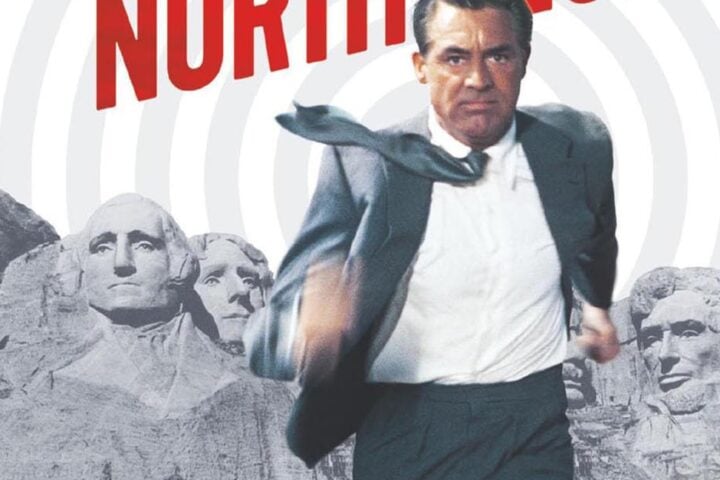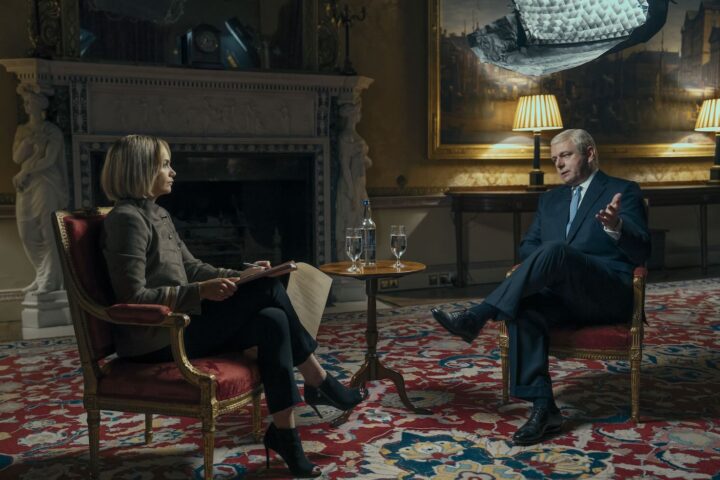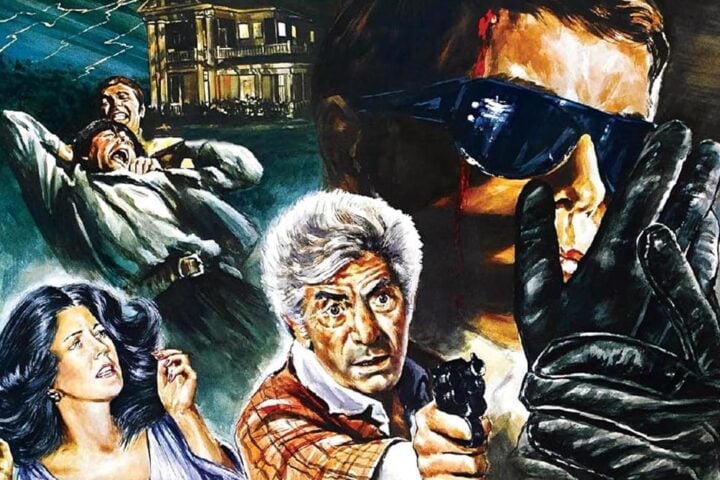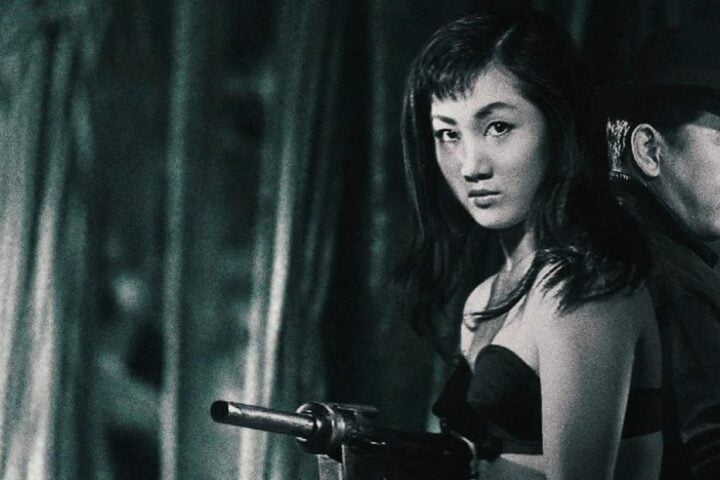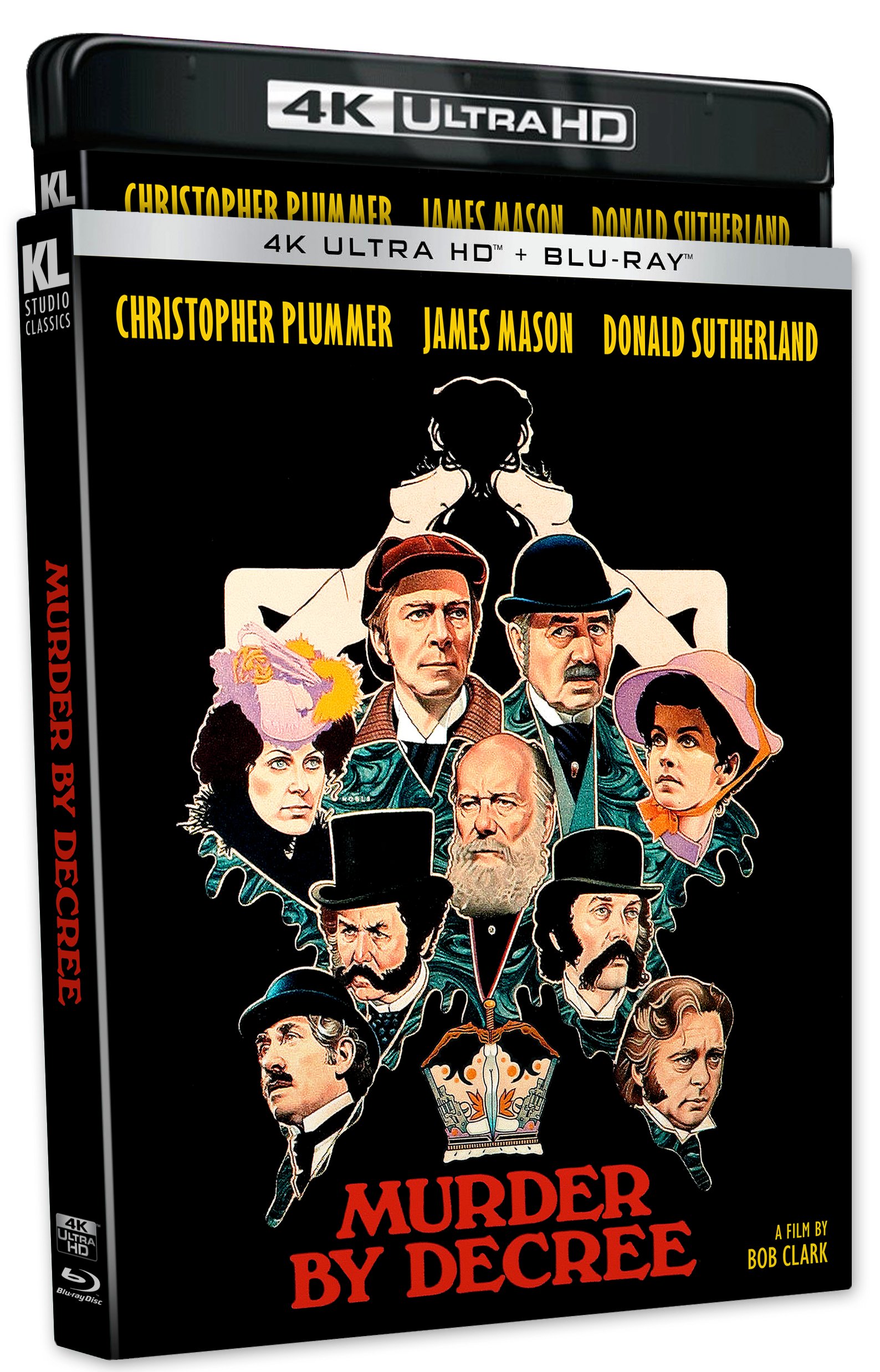 Bob Clark made a name for himself in the early 1970s with a trio of low-budget horror films that soon attained cult status: Children Shouldn’t Play with Dead Things, the rough-hewn tale of a group of actors contending with zombies on an abandoned island; Deathdream, a scathing Vietnam-era twist on “The Monkey’s Paw”; and Black Christmas, a blackly humorous proto-slasher flick. Enticed by a larger, though still modest, budget and a sterling cast of British and Canadian actors, Clark relocated to England to produce and direct Murder by Decree, an alternate-history period piece dripping with atmosphere that puts Sherlock Holmes (Christopher Plummer) and Dr. Watson (James Mason) on the trail of the notorious serial killer known as Jack the Ripper.
Bob Clark made a name for himself in the early 1970s with a trio of low-budget horror films that soon attained cult status: Children Shouldn’t Play with Dead Things, the rough-hewn tale of a group of actors contending with zombies on an abandoned island; Deathdream, a scathing Vietnam-era twist on “The Monkey’s Paw”; and Black Christmas, a blackly humorous proto-slasher flick. Enticed by a larger, though still modest, budget and a sterling cast of British and Canadian actors, Clark relocated to England to produce and direct Murder by Decree, an alternate-history period piece dripping with atmosphere that puts Sherlock Holmes (Christopher Plummer) and Dr. Watson (James Mason) on the trail of the notorious serial killer known as Jack the Ripper.
The film cleverly indicates one of its key themes in its opening scenes by cross-cutting between two very different locations. Each of these scenes contains a startling juxtaposition between the high class and the lower class. In the first, a posh carriage prowls the foggy back lanes of London’s East End, shot in slow motion with a wide-angle lens, so as to give it an otherworldly aura, like something out of F.W. Murnau’s Nosferatu. And in the second, we enter a lavish opera house where Holmes and Watson await an opera’s overture, while the proletariat in the upper rafters hiss and boo the late arrival of the Prince of Wales, signaling the radical political agitation that will play a significant role in the film.
The two segments dovetail when the occupant of the carriage emerges to strangle a lowly streetwalker (the murder unfolds entirely through the killer’s point of view), news of which reaches Holmes and Watson as they exit the opera house. Cinematographer Reginald Morris’s fluid camerawork serves to seamlessly link the sequences, with the Steadicam gliding airily through alleyways as the killer searches out his prey, which is followed by a long, unbroken crane shot that tracks Holmes and Watson as they discuss the latest carnage from inside their open carriage. Clark clearly enjoys keeping the camera in motion, and it rarely comes to rest over the course of Murder by Decree’s not inconsiderable running time.
Once the game is truly afoot, Holmes’s quest to unmask the killer leads him up and down the ladder of (invariably male) power as it existed in Victorian England, from a lowly pimp (Terry Duggan) to the prime minister (John Gielgud). The conspiracy theory plot that lies behind these events—encompassing an illegitimate royal baby, blood sacrifices, and the Masonic order—was derived from then-recent speculative nonfiction publications. It’s a heady brew of highly improbable extraction that would go on to inspire Alan Moore’s graphic novel From Hell.
At the heart of the film, and in several senses, is Holmes’s third-act encounter with Annie Crook (Geneviève Bujold), mother of the royal offspring, currently incarcerated in a stone-hewn mental institution of nightmarish proportions. Annie’s heartbreaking monologue, as she returns from catatonia to a semblance of sanity, unfolds largely in a single take. At one point, Morris’s camera subtly reframes her opposite a guttering candle, so that its tentative flickering light can serve as an objective correlative for her momentary reawakening. It’s a truly tragic instance of the way an entire nation’s power structure can conspire to crush a single individual, and, unfortunately, it’s just as timely now as it was back in 1979.
Because Murder by Decree is definitely a film from the 1970s, it unabashedly embraces these downbeat notions. Even the usually unflappable Sherlock Holmes cannot beat the system. In this instance, the best he can hope for is a sort of stalemate. Not for nothing does Holmes’s face-off with the prime minister take place in a room with chessboard flooring.
These limitations are perfectly in keeping with the film’s revisionist take on the character. Hardly the heartless “thinking machine” he can appear elsewhere, Holmes comes across here as the quintessential humanist, indulging in righteous anger and even shedding a few tears on more than one occasion at the suffering of others. Holmes’s final bit of dialogue takes on a loaded significance in the era of Vietnam and Watergate: “We’ve unmasked madmen, Watson, wielding scepters. Reason run riot. Justice howling at the moon.”
Image/Sound
The transfer on this UHD is sourced from a new HD master by StudioCanal, and it’s an improvement over the transfer on Kino Lorber’s 2020 Blu-ray, eradicating as it does the occasional odd speck that was visible here and there on the earlier transfer. The color palette is still calculatedly muted for the most part, so that the occasional burst of primary hues really catches the eye. Clarity of fine details with regard to period costumes and décor add to the film’s admirable atmospherics. Flesh tones are warm and lifelike, while grain levels are nicely balanced, even in the frequent murky nighttime fog scenes. The Master Audio stereo mix clearly presents John Hopkins’s crisp dialogue and does well by the emotive score from Carl Zittrer and Paul Zaza, which wrings the last evocative measure from a full-bodied orchestra.
Extras
This release ports over the two commentary tracks that appeared on Kino’s Blu-ray, an archival one by filmmaker Bob Clark that originated on Anchor Bay’s 2003 DVD, and one by film historians Howard S. Berger and Steve Mitchell. In wry, laidback fashion, Clark talks about the genesis of the project, lining up the stellar cast, the seamless blend of studio and location filming, as well as his fondness for continuous camera movement. One of the more fascinating tidbits has to do with Clark’s initial casting of Peter O’Toole and Laurence Olivier as Holmes and Watson, respectively, which fell apart due to the actors’ mutual dislike. Berger and Mitchell’s lively discussion covers a lot of production anecdotes, Clark’s career before and after Murder by Decree, and the film’s revisionist depiction of Holmes and Watson. The track also includes a fair bit of well-considered Ripperology, including mention of an earlier film, A Study in Terror from 1965, that also had Sherlock Holmes matching wits with Saucy Jack.
Overall
Making its UHD debut, Bob Clark’s atmospheric marrying of fact and fiction still resonates with its themes of political corruption and abuse of power.
Since 2001, we've brought you uncompromising, candid takes on the world of film, music, television, video games, theater, and more. Independently owned and operated publications like Slant have been hit hard in recent years, but we’re committed to keeping our content free and accessible—meaning no paywalls or fees.
If you like what we do, please consider subscribing to our Patreon or making a donation.

